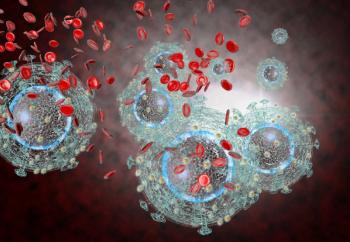
Why Southern Women Are Hit Hardest by HIV
Structural barriers may explain the HIV epidemic among women in the American South.
Several structural barriers may explain the HIV epidemic among women in the American South, according to a study recently published online in
The study identified the following as barriers to HIV prevention and care: eligibility requirements for Medicaid and the AIDS Drug Assistance Program (ADAP), lack of health insurance, high incarceration rates, and inadequate transportation and health infrastructure.
“Elimination of these structural barriers is likely to help resolve racial and geographic disparities in HIV health outcomes,” wrote first author Christina Ludema, PhD, of Indiana University School of Public Health-Bloomington and colleagues.
Health outcomes are worse for people with HIV infection who live in the South compared with other regions of the US. Diagnosis of HIV infection is highest in the South. Once they receive a diagnosis, people who live in the South are less likely to begin antiretroviral therapy, are twice as likely to progress to AIDS, and have the highest death rates from HIV in the US.1
To explore factors that may explain these disparities, researchers performed a cross-sectional subanalysis of the Women’s Interagency HIV Study (WIHS). The WIHS is a long-running prospective cohort of 3678 women living with or at risk for HIV infection. Participating women live in one of ten cities in the Northeast, West, or South. The majority of participants are unemployed and have household incomes of less than $18,000 per year.
The subanalysis included 1800 women who consented to neighborhood analysis of their home addresses in 2014. Participating women lived in Chapel Hill, NC; Atlanta, GA; Birmingham, AL; Jackson, MS; and Miami, FL. Researchers compared data from these women with data from participating women in Brooklyn, NY; Bronx, NY; Washington, DC; and Chicago, IL.
Key results
The results of the study showed that the South had:
• Lowest income eligibility thresholds for family Medicaid
– Lowest in Alabama and Mississippi (16% and 29% of the Federal Poverty Level, respectively)
• Lowest income threshold eligibility for ADAP
– Lowest in Alabama (250% of the Federal Poverty Level)
• Higher proportions of uninsured
– Lowest in Alabama (16.2 per square mile)
• More income spent on transportation
– Location affordability index 28% to 39% vs 16% to 23% in non-Southern states
• Fewer counties with hospitals providing HIV care
– Lowest in Georgia (55%), North Carolina (63%), and Alabama (76%)
– > 90% all other sites
• Highest incarceration rates
– Highest in Alabama, Mississippi, Florida, and Georgia
Please click below for discussion of the results and the take-home points.
The authors discussed several factors that could explain these results. Many Southern states have low investment in and consequently poor transportation infrastructure. Similarly, healthcare infrastructure and the number of HIV providers is also inadequate in many areas of the South. Also, disproportionate incarceration of Black men in the South disrupts social networks and contributes to increased poverty.
Importantly, many Southern states have opted not to expand Medicaid. Studies have shown that Medicaid expansion has resulted in significant decreases in all-cause mortality and delayed care, especially among minority groups and those living in poverty who are at highest risk for acquiring and dying of HIV infection.
“Current proposals to reform or repeal the Affordable Care Act may change federal reimbursements for Medicaid; research will be required to assess the effects of these future policies,” the authors emphasized.
Take-home points
• Neighborhood analysis of US women living with HIV or at risk for HIV infection found eligibility requirements for Medicaid and ADAP, lack of health insurance, high incarceration rates, and inadequate transportation and health infrastructure may explain the HIV epidemic in the South
• Addressing these structural barriers may improve HIV outcomes for people with HIV infection in the South
• Southern states that opted out of Medicaid expansion may exacerbate these disparities
• Reform and repeal of the Affordable Care Act may affect these disparities
References:
1. Ludema C, Edmonds A, Cole SR, et al.
Newsletter
Enhance your clinical practice with the Patient Care newsletter, offering the latest evidence-based guidelines, diagnostic insights, and treatment strategies for primary care physicians.



















































































































































































































































































